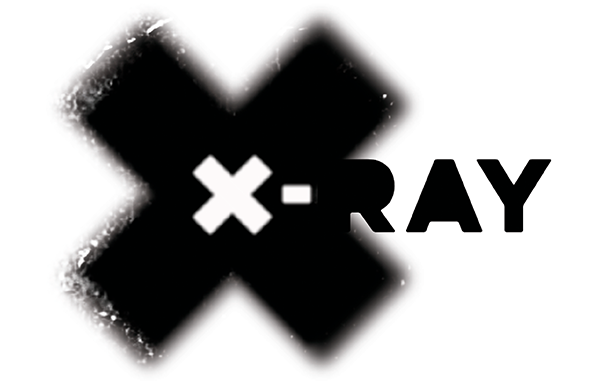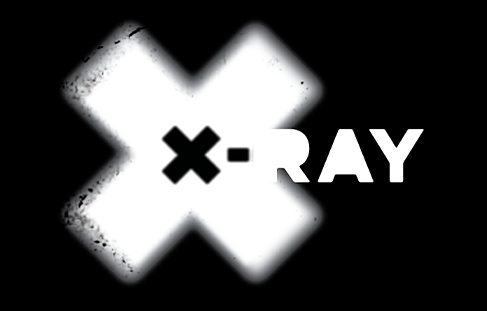Interview
Artist Interview: On Landscapes, Soundscapes and Mindscapes
By Michelle Ho
- Michelle Ho (MH): Your present exhibition titled Sojourn, seems to be a development of an earlier work, Singapore Junglescapes. Can you elaborate on how this journey of creating Singapore landscape images evolved?
Jeannie Ho (JH): There are similarities in terms of the way I approach my work and the connection between making photographs and my internal mindscape. I would classify all my work to be mindscapes of sorts in varying forms.
Sojourn is created in Singapore. This series comes from my photo sketches of my commute to work where stealing moments, dreams of a time away from the here and now emerge and transpose to a different space, where time has no real world meaning, and place has no real significance.
- MH: Nature is a central subject matter in Sojourn, especially in the context of how Singapore has often been described to be a concrete jungle. Despite the appearance of idyllic landscapes in this body of works, you have been emphatic that they are cityscapes, or vignettes of nature as a co-occupant amidst urban life. In what ways does Singapore present a peculiar environment in the study of nature?
JH: Singapore is lauded to be a very easy place to live. Things function efficiently, they can be so convenient that it results in a kind of sameness that permeates everyday life. Generally speaking, every neighbourhood is the same. Even our forests are planned – where green spaces are permitted, and where other activities or functions are zoned within. How we live, work, or enjoy nature takes place in a structured way, such that our lived experiences are frequently predictable – so much so that our lives resemble a flatline. My images are a way of using this structured material and repurposing them to suggest a sense of otherworldliness, a time and place outside of our structured reality.
- MH: You are highlighting that the sceneries of nature that you capture, are in fact mediated landscapes that have been engineered, and modified by human will. There is a kind of destabilising effect when you recompose or repurpose Singapore landscape with a pictorial, postcard quality.
JH: Viewers might perceive a sense of unsettledness. The audio components of the work perhaps effect these sensations. At the moment, six pieces have accompanying soundscapes. The soundscapes are digital interpretations using applications to augment sound from an image, based on adjusting algorithms which then ascribe characteristics to the light and dark, and texture and tone of the images. There are other sounds as well, that remind the viewer of traffic, of our urban lives. I’ve particularly introduced the sound of windshield wipers, (this is a real experienced moment during a couple of my shoots that I am re-creating) to create the effect of a metronome to suggest the droning of counting time yet in its exacting repetitive beats, time begins to lose itself, with no sense of a beginning or an ending. There are several layers to the main soundscape to produce a sense of interweaving. I am interested in the idea that experience can have multiple co-existing layers.
- MH: We often think of art in visual ways. Sound is invisible, and yet its presence is an integral part of art and this artwork. Is this the first time you are working with sound in your practice? As these soundscapes were derived from algorithms that you adjusted to present another experience of nature, can you elaborate more on the programming aspect of the aural elements?
JH: Yes, this is the first time I am working with sound. I’ve always been intrigued by sensorial experiences in art. By experimenting with this medium, this aural element ended up being essential to the ideas I’m trying to bring across in my work. The sound elements in Sojourn have a strangeness to them that’s very interesting to me. They are “extracted” from these Sojourn images of landscapes as opposed to recording at those locations. I’m interested in the complexities of layers and interpretations, not just on the level of the creation process, but on a deeper and more enigmatic level occurring at stages of cognition and in our consciousness.
I would like to think that these soundscapes rendered my cognitive “interpretations” and “translations” through the augmentations of these images that were shot and manipulated by me. Yes, they are sounds of these landscapes but more accurately, perhaps sounds of mindscapes referencing landscapes.
- MH: The investigation of forms of nature has been a preoccupation for several Singapore contemporary artists such as Donna Ong, Zen Teh, and Robert Zhao to name a few. Their works have brought us to various trajectories of how nature has been negotiated with, raising questions of aesthetic positions, artifice as well as the implications of conservation and urbanisation. I would like to delve further into what your specific interests might be when you engage with nature as a source of inquiry.
JH: How I create my images - the manner I choose to crop these landscapes – taking away surrounding buildings and structures when they occur in the images, they appear as nature in the raw, but the fact is these images are actually part of our cityscape. In my work, isolating these pockets of nature and making them the focal point of a landscape that suggests wild and untouched nature, perhaps reveal a longing for a return to uninterrupted nature and the wish for less structure. When I think of the history of Singapore and its geography, clearly it was all jungle at a historical point in time, a completely wild Singapore of forests and animals. This work is a re-creation of another possible Singapore, an imagined Singapore, reminiscent of the origins of the earth.
- MH: Sojourn is also a process-based work that is an ongoing series of collected images as you go about your daily commute. They are not specific excursions, nor are they intended as a series with a beginning and end. Let’s talk about the post-production of the images. What are some of the methods of working you’ve used to arrive at a position regarding your work?
JH: It was not like I gave myself a task to visit specific sites or have to cover various terrains in Singapore. In fact, the location of these places is not important to the meaning of the work. What is important is that they were captured when I was in between my routines. I am intuitively drawn to natural/nature spaces. Through this process, I realized that we actually have a lot of greenery amidst the city. I’ve shot pockets of green spaces – some are relatively small square areas– spaces that nobody notices, or would consider to be special.
After the images have been shot, the digital manipulation of the source images is an important part of the making. This is where the everyday is transformed into another vision. When I make these works, I am also thinking about a future world. Imagine if we are in a future world where we have lost our connection with nature, what is the picture of the past that we would recall? I want to bring the feeling of looking back on something that has been lost. Sojourn is meant to suggest a reference to a time in the past, for someone in the future.
- MH: I had earlier referred to your work has having a postcard quality to it. But I don’t think it is nostalgia that you are trying to effect, but rather a sense of belated commemoration. What kind of processes did you apply in your prints to achieve this?
JH: One thing I wanted to do was to distress the images. I experimented with various methods, such as printing on paper that has been physically distressed, to adding elements that suggested textures such as scratches and stains. I also played with the colours such that they intentionally do not resemble the current reality of how these places appear in our day to day. Sometimes, the colour is influenced by other textures or objects that I add to them.
- MH: There is an aesthetic dimension in Sojourn that alludes to the painting tradition in the way textures and tonalities are at times restrained, and other times intensified. In what ways might this body of work be influenced by painting and its stylistics or history?
JH: Frankly, I did not set out to create these to resemble paintings. But I was trained in painting before I specialised in photography, and I’ve spent a lot of time staring at paintings in museums. I am also drawn to how during the 18thcentury at the onset of the age of industrialisation, 18th – 19thcentury landscape paintings were like “recordings” of the natural world then, and for me, “recordings” of the struggle between nature and human will, seen in, for example, some of the English painter J.M.W. Turner’s work. Landscape painting’s relationship with points of origin, or the unfolding of a particular world or era fascinates me.
- MH: In your artist statement, you draw a parallel between ideas of liminal and peripheral spaces. The relationship between creative and cognitive processes, and between art and the mind, seems to inform the understanding of your work. How might these notions be conveyed in Sojourn?
JH: When I talk about liminal spaces, and the space between places, that space relates more to the headspace or mental plane when one is not consciously thinking but rather, acting intuitively. I am usually in this state when I am shooting. Photography can sometimes be an act of meditation. In a lot of ways, my photographs are imprints of my mind at these particular times. The act of seeing, of observing in the way I photograph “requires” me to zone out and “float” in a liminal, peripheral space. In such instances, there isn’t a concerted pursuit of a rare occurrence to photograph but rather, an unconscious awareness of sorts that is at the same time, an increased awareness of my immediate environment.
But as an artist, I am interested in bringing awareness towards nature especially in this very small, urban, and convenient city-state of Singapore, which many have lost touch with. I’m interested in bringing about an awareness of the importance of nature’s role in our ecosystem and our lives; an understanding that nature was here before us; and an awareness of origins and prior existences of the earth, through these re-imagined Singaporean pockets of nature squeezed in between one structure and the next. They are reminders of another time, otherworldly, and foreign, and unfamiliar to most Singaporeans. They speak of a desire to reset, let nature be unruly and wild, and be as it should. Perhaps that's why these seem to reference 18th- 19thcentury paintings as a way of reflecting an old-world, wild and sometimes violent, or pastoral and arcadian.
Michelle Ho is Gallery Director of ADM Gallery at NTU School of Art, Design and Media. She has curated numerous Southeast Asian and international art exhibitions, including collaborations with Queensland Art Gallery (QAGOMA), Museum of Contemporary Art Tokyo (MOT), and National Museum of Art, Osaka (NMAO). Formerly a curator at Singapore Art Museum, she led the acquisition strategies of its contemporary art collection from 2013 – 2015 and was co-curator in the Singapore Biennale 2013. Ho is also the curator of the Singapore Pavilion at the 58th Venice Biennale in 2019.

